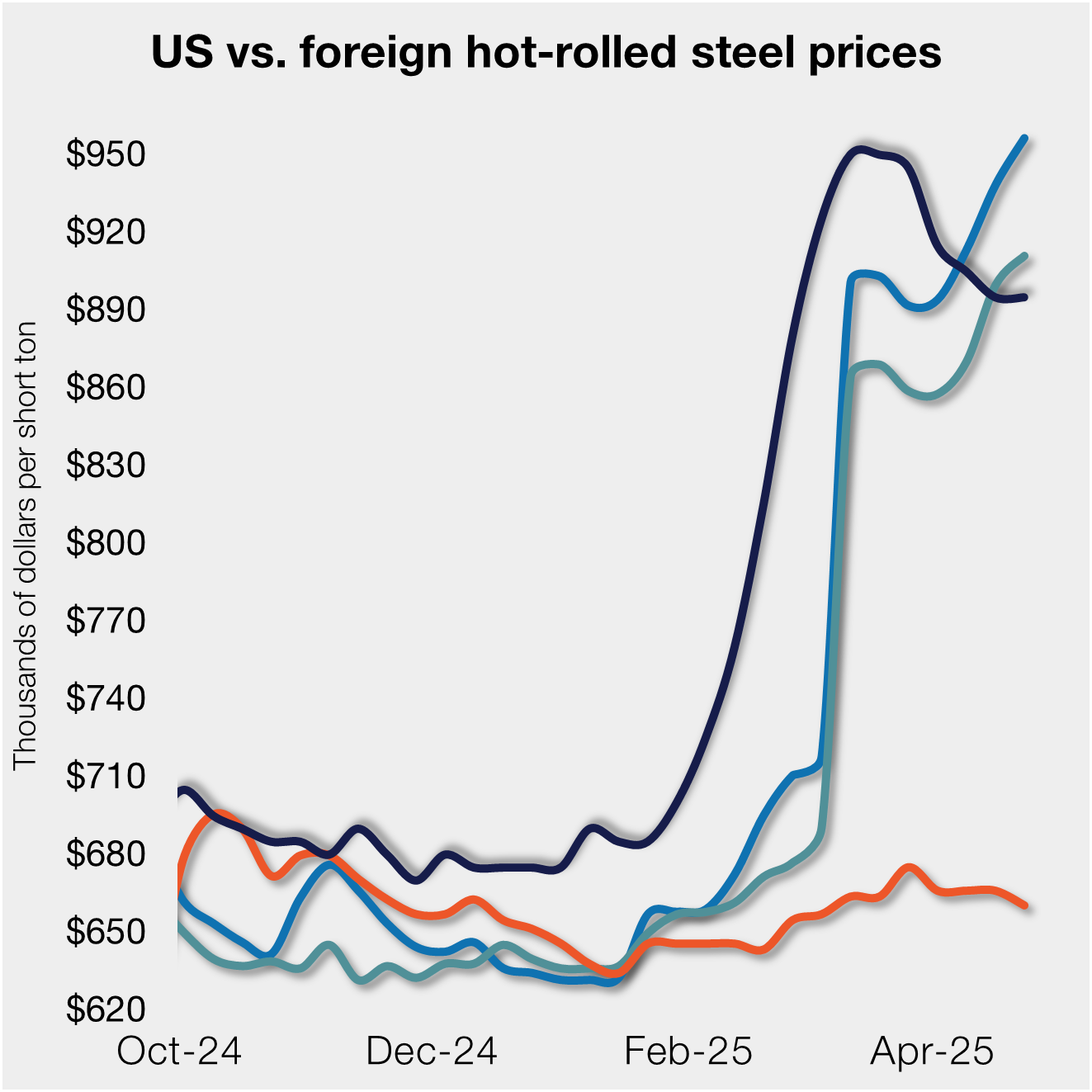Steel Products

Market Chatter This Week
Written by Becca Moczygemba
August 24, 2023
On Monday and Tuesday of this week, SMU polled steel buyers on a variety of subjects, including steel prices, demand levels, sheet prices abroad, inventory, and what people are talking about in the market. Rather than summarizing the comments we received, we are sharing some of them in each buyer’s own words.

We want to hear your thoughts, too! Contact david@steelmarketupdate.com to be included in our questionnaires.
When and at what price level do you think steel prices will bottom, and why?
“I think they firm up in the near term. Then after the mill outages in Q4, prices get hit hard–so call for a bottom in November around $680.”
“The bottom is close as activity and steel consumption will increase in September and October.”
“Prices will bottom September unless UAW goes on strike.”
“Bottom will be in September at $750-850.”
“In November around $700.”
“Prices will bottom in November around $720.”
“I think prices will hit a low in December around $725.”
“Plate is still at the peak of pricing.”
“I feel we still have a while left to drift lower. Lead times are still too short to support anything reversing course. Demand is also just ‘OK’ and that isn’t even talking about the UAW stuff.”
“I think we are about at the bottom. The mills will want to get pricing a bit higher before negotiating contracts for 2024.”
Is demand improving, declining or stable, and why?
“Demand is declining. Auto is pulling well on the direct end but almost everyone is reducing inventory in anticipation of a labor strike.”
“Demand is steady to up when compared to year-over-year activity (summer months are slower in terms of activity and shipments).”
“Demand is stable but slow.”
“Demand is flat and declining in some markets.”
“Demand is stable for now.”
“Demand is okay in our sector. But I know a lot of service centers are struggling.”
“Declining, as economy is slowing.”
“Stable to declining. Business is not that great overall, only in pockets.”
Is inventory moving faster or slower than this time last year – and why?
“Faster because demand is better. This time last year buyers started to destock.”
“I think smoother is the word. The industry is not plagued or carrying too much inventory like it was last year.”
“Inventory is moving slowly.”
“Faster for fear of falling prices and focus on inventory turns.”
“Inventory is moving about the same year over year.”
“Slower for construction as many projects are shelved until money loosens up.”
“For us, it is actually improving. But that is only because we’re stealing market share.”
“Faster. Higher carrying costs are forcing faster movement of inventory.”
“Slower – business is down thanks to the economy and high interest rates.”
With US sheet prices near parity with prices abroad, are imports still attractive vs. domestic material? Why or why not?
“They are priced well, but with extended lead times I cannot see people wanting to load up as they expect prices to plummet.”
“No. The advantage is gone and imports aren’t attractive.”
“No, the lead time is too long from offshore.”
“Not seeing much action on imports because domestic prices are expected to go lower.”
“Imports are not attractive in general due to lead time risk and uncertainty.”
“Imports are not attractive, take too long, and the market is too volatile.”
“Imports are still an ok value if you can wait for the lead times. But as the spread has narrowed to near parity, imports have definitely lost some of their luster.”
“To keep pricing low, we still have to order offshore.”
“No – cheaper to buy domestic and you can have it in weeks, not months.”
What’s something that’s going on in the market that nobody is talking about?
“I think there should be more to talk about with all the outages. Seems like buyers are downplaying them as not working.”
“Scrap. It was a push last month and is a key indicator for steel consumers in their decision-making process to buy more or less each time they buy.”
“Many furnaces going down for maintenance in the next 90 days.”
“Energy costs.”
“Finished goods inventories are growing.”
“Auto and appliance contract time, mills need to shore up the bottom.”
“Buyouts are discussed but effects are not always clear.”
“Capacity utilization and mergers and acquisitions.”
“I had previously said service center consolidation, but I guess I should have said ‘mill’ consolidation. I do still feel like there is a lot of downstream M&A activity waiting to pop.”
“How interest rates are slowing the market.”

Becca Moczygemba
Read more from Becca MoczygembaLatest in Steel Products

US rig count up, Canada declines
Oil and gas drilling activity was mixed this week, according to Baker Hughes. US rig counts expanded for a second straight week, while Canadian activity continued its seasonal slowdown of eight consecutive weeks.

US, offshore CRC prices continue to diverge
US cold-rolled (CR) coil prices declined again this week, slipping for a third straight week. Most offshore markets did the opposite, moving higher this week.

S232 lifts EU HR price over US, Asian HR still well behind
Domestic hot-rolled coil prices were flat this week after dropping for four straight weeks. Most offshore markets bucked the trend and gained ground.

SMU Steel Demand Index dips into contraction
SMU’s Steel Demand Index has moved into contraction, according to late April indicators. The slowdown comes in response to growing tariff uncertainty after the index reached a four-year high in late February.

Nucor selects Fives Group for new galv line at CSI
Nucor Corp. has tapped Fives Group as its partner in designing and manufacturing the new continuous galvanizing line being added at its California Steel Industries (CSI) joint venture in Fontana, Calif.
